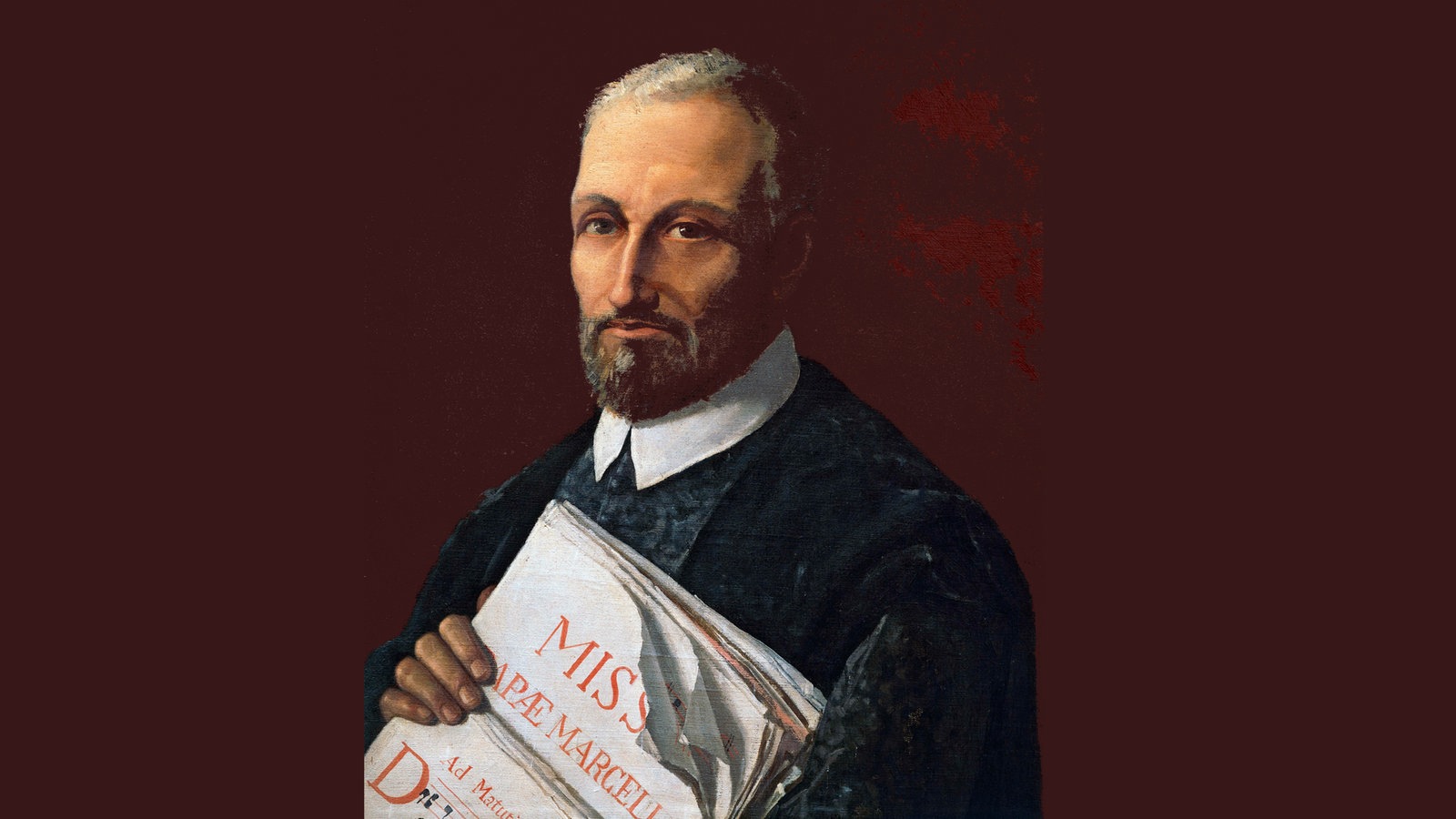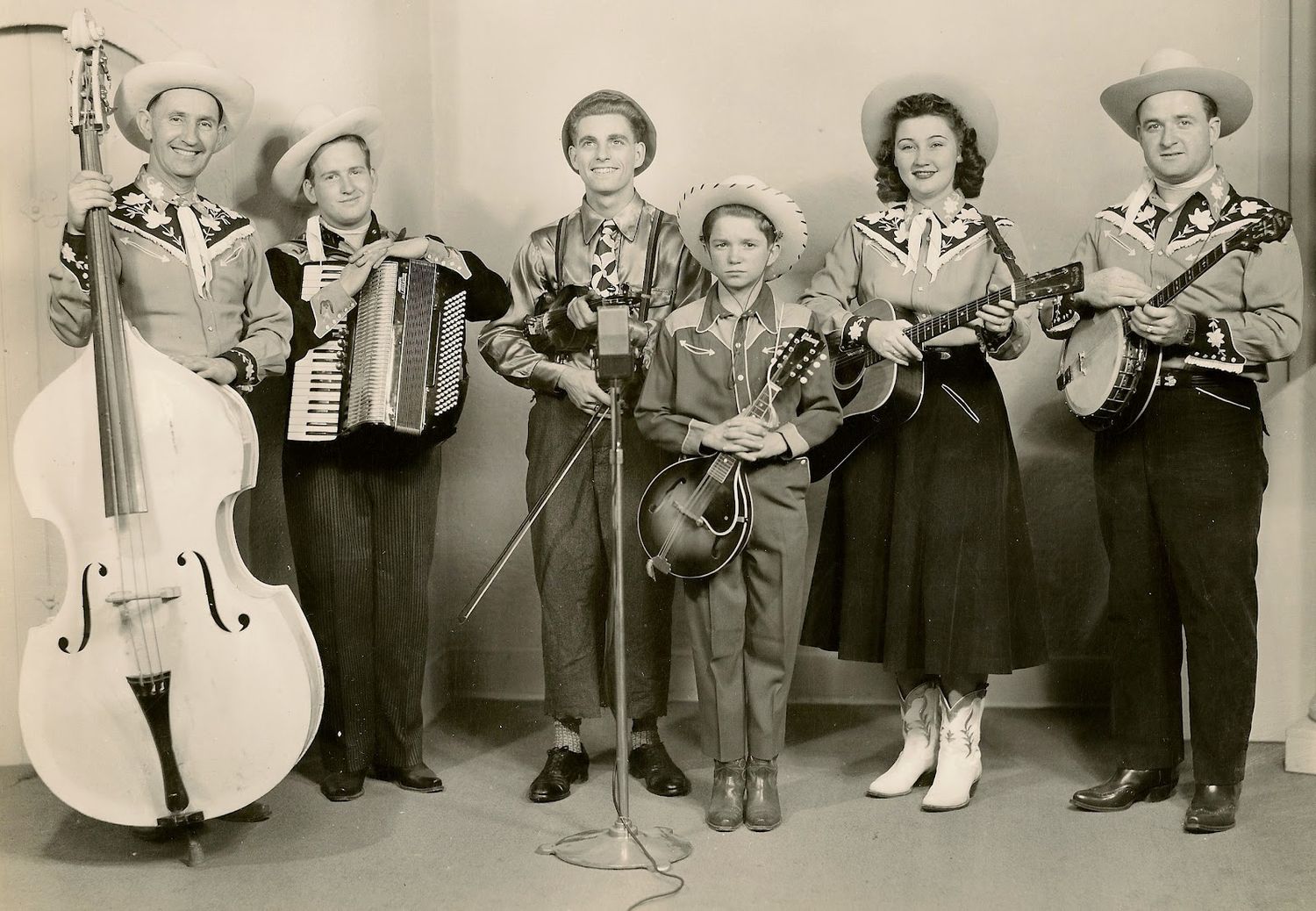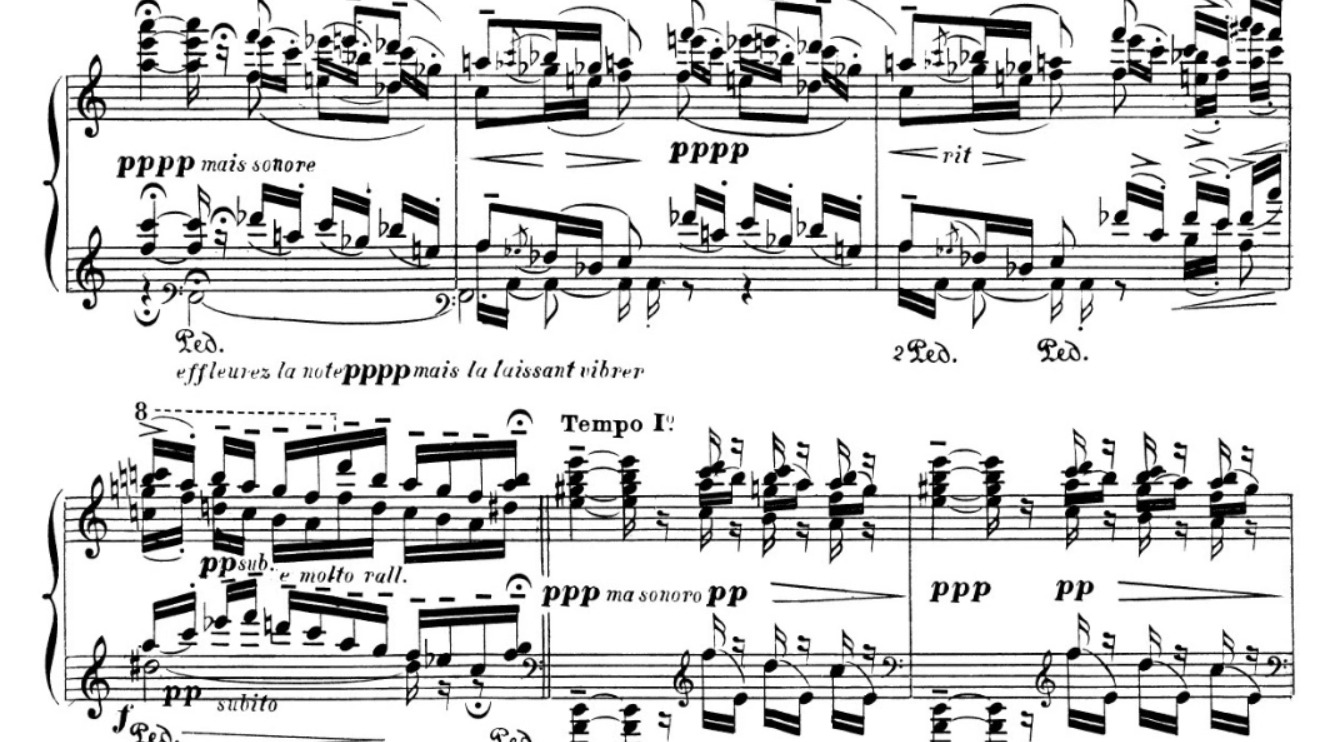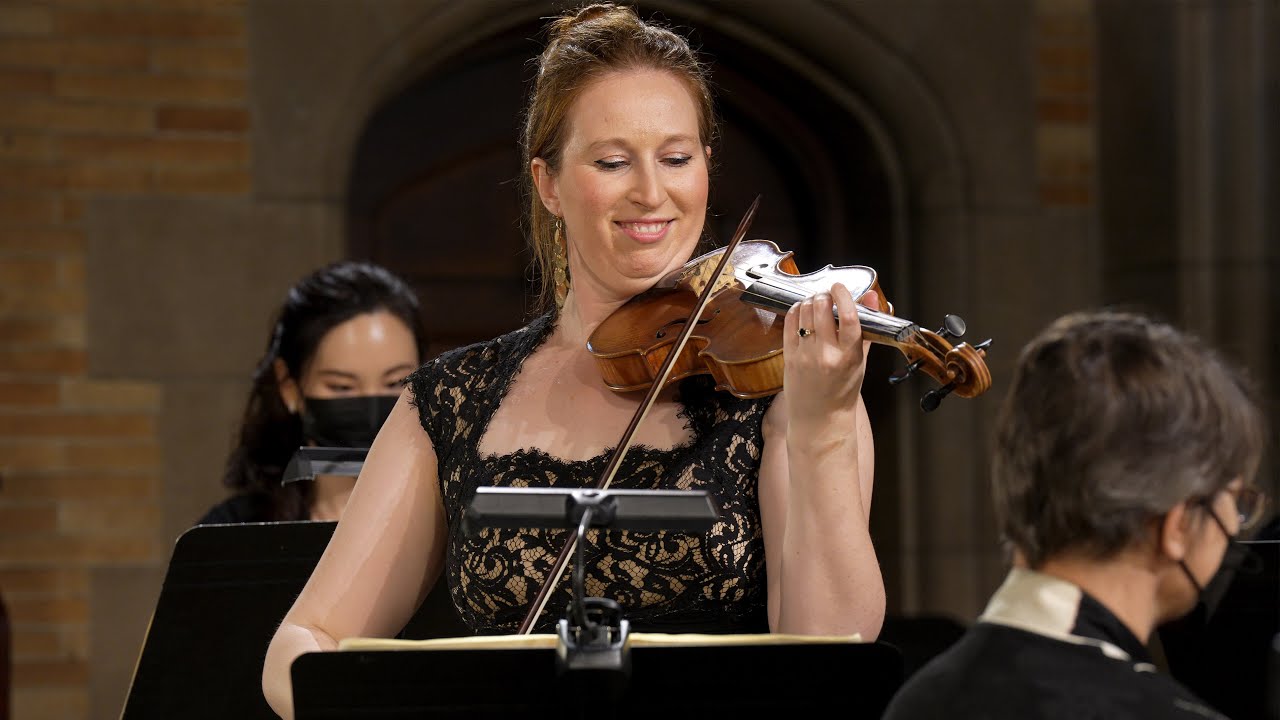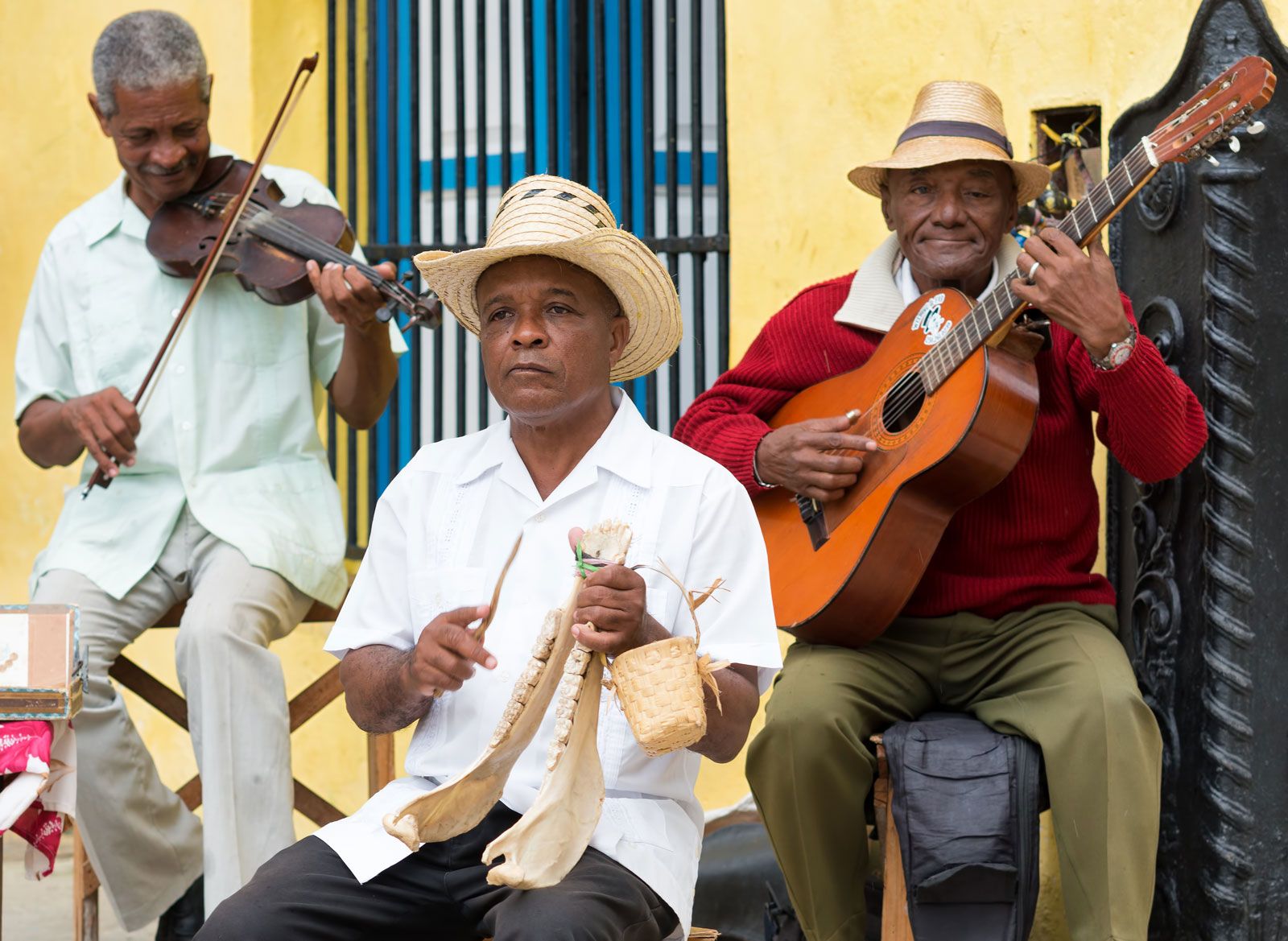Home>Events & Info>Music History>What Are The Different Periods In Music History


Music History
What Are The Different Periods In Music History
Modified: February 24, 2024
Discover the fascinating periods in music history and explore the evolution of music through time. From ancient melodies to modern compositions, delve into the rich tapestry of music's past.
(Many of the links in this article redirect to a specific reviewed product. Your purchase of these products through affiliate links helps to generate commission for AudioLover.com, at no extra cost. Learn more)
Table of Contents
- Introduction
- Ancient Music: The Prehistoric Era
- Medieval Period: From Gregorian Chant to Polyphony
- Renaissance Era: A Time of Rebirth in Music
- Baroque Period: Ornate and Dramatic Music
- Classical Era: Symphonies and Sonatas
- Romantic Period: Expressive and Emotional Music
- Impressionist Period: Capturing Atmosphere and Sensation
- Modern Era: Diverse and Experimental Music
- Conclusion
Introduction
Music has been an integral part of human civilization since ancient times, accompanying rituals, celebrations, and everyday life. It has evolved and transformed over the centuries, reflecting the values, emotions, and artistic expressions of different periods in history. From the prehistoric drum beats to the complex symphonies of the modern era, music has captured the essence of every era and culture.
This article explores the different periods in music history, offering a glimpse into how music has evolved and shaped the cultural landscape. Each period has its distinctive style, instrumentation, and historical context, making it an exciting journey through time. Whether you are a music enthusiast, a history buff, or simply curious about the origins of the music you enjoy today, this article will provide you with a comprehensive overview of the fascinating world of music history.
Join us as we embark on a musical journey that spans centuries, exploring the ancient origins of music, the development of different genres and styles, and the influential composers who have left an indelible mark on the world.
Ancient Music: The Prehistoric Era
The Prehistoric Era refers to the period before the invention of writing, spanning from the caveman days to around 3,000 BCE. Although there are no written records from this time, archaeologists have discovered musical instruments and evidence of early musical practices, giving us insights into the music of our ancient ancestors.
Ancient music during this era was primarily vocal, with early humans using their voices to communicate and express themselves. The earliest musical instruments were made from natural materials such as bones, shells, and stones. These instruments, including flutes, drums, and rattles, were likely used to create rhythmic patterns and melodies.
Music in the Prehistoric Era served various purposes, including religious rituals, communication, and community bonding. It was believed to have a spiritual and healing effect on individuals and the community as a whole. The melodies and rhythms were often based on natural sounds like bird songs or the rhythm of footsteps, reflecting the close connection between early humans and their natural surroundings.
The lack of written records makes it challenging to fully understand the music of this period. However, discoveries of instruments and cave paintings suggest that music played a significant role in the lives of our ancient ancestors. These early musical practices would lay the foundation for the development of music in later civilizations.
Despite the limited knowledge about the specifics of Prehistoric music, it remains a significant part of our musical heritage. It is a reminder of the universal human instinct to create, express, and connect through the power of sound, no matter how far back in time we go.
Medieval Period: From Gregorian Chant to Polyphony
The Medieval Period, also known as the Middle Ages, spanned from the 5th to the 15th century. It was a time of great religious and societal influence, which shaped the development of music. The dominant form of music during this period was Gregorian chant, named after Pope Gregory I, who is believed to have organized and codified the chants.
Gregorian chant, also known as plainchant, was monophonic, consisting of a single melodic line sung in unison. It was primarily used in churches and monasteries as a way of worship and conveying religious texts. The melodies of Gregorian chant were characterized by their flowing and meditative nature, sung a cappella without any instrumental accompaniment.
As the Medieval Period progressed, the desire for musical complexity and polyphony emerged. Polyphony is the simultaneous performance of two or more independent melodic lines, creating harmonies and counterpoint. The rise of polyphony marked a significant shift in musical expression, allowing for greater musical depth and complexity.
The development of polyphony led to the emergence of new musical forms, such as organum and motet. Organum involved adding a second melodic line to an existing chant, creating parallel harmonies. Motets, on the other hand, were more freely composed and often featured multiple voices singing different texts simultaneously.
Notable composers from the Medieval Period include Hildegard von Bingen, Guillaume de Machaut, and Pérotin. Their compositions, ranging from sacred chants to complex polyphonic works, showcased the evolving musical styles of the time.
The Medieval Period laid the foundation for Western music and set the stage for future developments in composition and musical notation. It showcased the power of religious music and its role in shaping society and culture during this era.
Renaissance Era: A Time of Rebirth in Music
The Renaissance Era, spanning from the 14th to the 17th century, marked a significant shift in music history. It was a time of cultural and intellectual rebirth, characterized by a renewed interest in the arts, sciences, and exploration. The music of the Renaissance reflected this spirit of innovation and exploration, breaking away from the constraints of the Medieval Period.
One of the defining features of Renaissance music was its focus on humanism, emphasizing the importance of human expression and individualism. Composers began to experiment with new musical techniques and forms, striving to capture the emotions and complexities of the human experience.
Polyphony continued to thrive during the Renaissance, but with greater complexity and sophistication. Composers developed the technique of imitative counterpoint, where different voices imitated and echoed each other, creating intricate harmonies and interplay. This technique added depth and richness to the music and became a hallmark of the era.
The use of musical notation also advanced during the Renaissance, allowing for more precise and detailed representation of musical ideas. Composers such as Josquin des Prez and Giovanni Pierluigi da Palestrina became renowned for their intricate and expressive compositions, pushing the boundaries of musical creativity.
Vocal music, particularly secular madrigals and chansons, gained prominence during this era. These compositions, often set to poetry, explored themes of love, nature, and human emotions. The use of word painting, where the music reflects the meaning or emotion of the text, became a popular technique among Renaissance composers.
Instrumental music also began to flourish in the Renaissance, with the rise of instruments such as the lute, viol, and keyboard instruments. Dance music and instrumental arrangements of vocal compositions became popular forms of entertainment.
The Renaissance Era was a time of great innovation and experimentation, setting the stage for the music of future periods. It bridged the gap between the Medieval and Baroque periods, laying the groundwork for the development of elaborate and intricate musical styles.
Baroque Period: Ornate and Dramatic Music
The Baroque Period, spanning from the early 17th to the mid-18th century, was characterized by its ornate and dramatic style of music. It was a time of grandeur, opulence, and artistic expression, reflecting the political and cultural climate of the era.
Baroque music was characterized by its elaborate melodies, intricate harmonies, and dramatic contrasts. Composers of this period, such as Johann Sebastian Bach, George Frideric Handel, and Antonio Vivaldi, wrote music that showcased virtuosity, technical skill, and emotional intensity.
One of the defining features of Baroque music was the use of basso continuo, also known as thoroughbass. This technique involved a bass line played by a bass instrument, such as a cello or bassoon, accompanied by a keyboard instrument, such as a harpsichord or organ. The basso continuo provided a harmonic foundation and allowed for improvisation and ornamentation.
The orchestra played a significant role during the Baroque Period, with the emergence of the concerto and the development of the sonata and suite forms. The concerto showcased the skill of a soloist or a small group of soloists accompanied by an orchestra. The soloist would often engage in a musical dialogue with the orchestra, displaying their technical prowess and expressive abilities.
Opera also gained popularity during the Baroque Period, with composers like Claudio Monteverdi and Jean-Baptiste Lully pushing the boundaries of musical theater. Opera combined music, drama, and visual spectacle to create a grandiose and immersive theatrical experience.
The music of the Baroque Period was highly ornamented, with trills, runs, and flourishes added to melodies to enhance their expressiveness. Composers utilized dynamic contrasts, rapid changes in tempo, and intricate contrapuntal writing to create a sense of drama and emotional impact.
The Baroque Period left a lasting legacy on Western classical music, influencing later composers and musical styles. Its ornate and expressive music continues to captivate audiences and remains an important part of our musical heritage.
Classical Era: Symphonies and Sonatas
The Classical Era, spanning roughly from the mid-18th to the early 19th century, was a period of artistic refinement and balance. It was characterized by a focus on clarity, simplicity, and form in music, marking a departure from the complex and ornate compositions of the Baroque period.
During the Classical Era, symphonies and sonatas became the dominant musical forms. The symphony, typically written for a full orchestra, consisted of multiple movements played in a specific order. Composers like Wolfgang Amadeus Mozart and Joseph Haydn were instrumental in the development of the symphony, crafting works that showcased precise craftsmanship, elegance, and emotional range.
Sonatas, on the other hand, were compositions typically written for solo instruments or a small ensemble. They were structured compositions with multiple movements, often following a fast-slow-fast pattern. The sonata form, with its distinct sections and themes, became a popular format for composers to explore themes and develop musical ideas.
One of the hallmarks of the Classical Era was the rise of the classical style, characterized by balance, clarity, and simplicity. Composers focused on proportional melody lines, clear harmonic progressions, and balanced phrases. This emphasis on structure and form allowed for greater accessibility and widespread appeal of music during this period.
The Classical Era also marked an important shift in the role of the composer. Composers, such as Ludwig van Beethoven, began to gain more independence and recognition. They were no longer just serving as court musicians or church composers but were seen as artists in their own right, creating music that expressed their individuality and vision.
Notable innovations of the Classical Era include the evolution of the symphonic form, the development of the piano as a solo instrument, and the expansion of the string quartet as a significant chamber ensemble. Composers also explored new tonalities, dynamics, and expressive techniques to deepen the emotional impact and further engage their audiences.
The Classical Era paved the way for the future of Western classical music, providing a foundation for the Romantic and later periods. Its emphasis on clarity, balance, and formal structures influenced composers for generations to come, establishing a lasting legacy in the world of music.
Romantic Period: Expressive and Emotional Music
The Romantic Period, spanning from the late 18th to the early 20th century, was a time of intense emotion, individualism, and artistic freedom. It was characterized by a shift away from the structured and balanced compositions of the Classical Era, towards music that embraced strong emotions, vivid storytelling, and personal expression.
During the Romantic Period, composers sought to elicit deep emotional responses from their audiences. They explored a wide range of emotions, from intense love and longing to profound melancholy and dramatic conflict. Composers such as Ludwig van Beethoven, Franz Schubert, and Pyotr Ilyich Tchaikovsky infused their music with expressive melodies, lush harmonies, and sweeping dynamics to convey the full spectrum of human emotions.
One of the defining aspects of Romantic music was the increased emphasis on the individual genius of the composer. Composers became more independent, pushing the boundaries of musical conventions and expressing their unique artistic visions. They experimented with new forms, tonalities, and harmonic structures, seeking to break free from the confines of traditional musical norms.
The orchestra grew in size and complexity during the Romantic Period, allowing for greater sonic richness and dramatic impact. Composers utilized the expanded orchestral palette to create powerful and evocative symphonies, concertos, and tone poems. Works such as Beethoven’s Symphony No. 5 and Tchaikovsky’s Symphony No. 5 showcased the grandeur and emotional depth of Romantic orchestral music.
Art song, or Lied, also flourished during the Romantic Period. Composers set poetry to music, creating intimate and expressive songs that captured the essence of the lyrics. Schubert’s lieder, such as “Erlkönig” and “Der Lindenbaum,” exemplify the fusion of music and poetry in this genre.
The Romantic Period also saw the rise of virtuoso performers, such as Franz Liszt and Frédéric Chopin, who pushed the boundaries of technique and expression on their respective instruments, particularly the piano. Their compositions featured intricate and dazzling passages, showcasing their technical prowess and emotional range.
The Romantic Period was a time of intense musical innovation and experimentation. Composers embraced the power of music to evoke emotions, tell stories, and transport listeners to new realms of experience. The passion and expressiveness of Romantic music continue to captivate audiences and leave a lasting impact on the world of classical music.
Impressionist Period: Capturing Atmosphere and Sensation
The Impressionist Period, which emerged in the late 19th and early 20th centuries, marked a departure from the traditional musical styles of the past. Inspired by the Impressionist art movement, composers of this period sought to capture fleeting moments, sensations, and atmospheric effects through their music.
Impressionist music is characterized by its emphasis on timbre, harmony, and evocative melodies. Composers such as Claude Debussy and Maurice Ravel embraced lush and intricate harmonies, delicate textures, and unconventional scales to create aural landscapes that transport listeners to ethereal and dreamlike realms.
One of the key features of Impressionist music is the use of unconventional scales and modes rather than strict tonal structures. Whole-tone scales, pentatonic scales, and modal melodies were employed to evoke a sense of ambiguity and shimmering tonal colors.
Rather than focusing on traditional narrative structures, Impressionist music aimed to depict atmospheric and sensory experiences. Composers used musical techniques such as floating melodies, subtle rhythmic patterns, and brushes of color from different instrumental sections to create a sense of fluidity and impressionistic imagery.
Impressionist composers also drew inspiration from nature, with water, landscapes, and the play of light and shadow serving as common themes. Debussy’s “La Mer” and Ravel’s “Daphnis et Chloé” are examples of works that capture the essence of the natural world, allowing listeners to immerse themselves in the evocative beauty of these sonic landscapes.
Another notable feature of Impressionist music is the emphasis on tone color and orchestration. Composers experimented with delicate and subtle instrumental combinations, utilizing the full range of the orchestra to create a palette of sonic colors. They placed a significant focus on the interplay between different instrumental timbres and the blending of individual instrumental voices.
The Impressionist Period challenged the conventions of the time and created a new musical language that celebrated the sensory experience and blurred the boundaries between reality and imagination. The influence of Impressionism can still be heard in contemporary classical music, as it continues to inspire composers to explore unconventional tonalities, textures, and atmospheres.
Modern Era: Diverse and Experimental Music
The Modern Era, also known as the 20th and 21st centuries, has witnessed a vast and diverse range of musical styles and movements. This period has been characterized by an explosion of creativity and experimentation, as composers have pushed the boundaries of traditional musical structures and embraced new technologies and influences.
One of the defining aspects of the Modern Era is the rejection of traditional tonality and harmonic conventions. Composers such as Arnold Schoenberg and Igor Stravinsky sought to break away from established norms and explored atonal, dissonant, and polytonal compositions. This departure from tonal centers and predictable harmonies led to an increased sense of tension and ambiguity in the music.
The Modern Era has witnessed the rise of numerous influential movements, each with its unique approach to composition and performance. These include the expressionism of the early 20th century, the neoclassicism of the mid-20th century, and the minimalism and post-minimalism of the late 20th and early 21st centuries. These movements have brought forth innovative ideas and techniques, shaping the trajectory of contemporary music.
Electronic music has also played a significant role in the Modern Era. The invention and development of electronic instruments and recording technology have allowed composers to explore new soundscapes and create entirely new sonic possibilities. The works of composers such as Karlheinz Stockhausen and Pierre Schaeffer have pushed the boundaries of traditional composition by incorporating electronically generated sounds and manipulating recorded sounds.
Musical genres have become increasingly diverse and intermingled in the Modern Era. Jazz, rock, pop, and world music have had a profound impact on art music, leading to the emergence of hybrid styles and cross-cultural collaborations. Composers like George Gershwin and Philip Glass have incorporated jazz and popular music influences into their compositions, blurring the lines between different genres.
Furthermore, the Modern Era has witnessed a rise in interdisciplinary collaborations, with composers working closely with choreographers, visual artists, and filmmakers. This fusion of different art forms has resulted in immersive and multimedia experiences, exploring the interconnectedness of various artistic mediums.
The Modern Era celebrates diversity, innovation, and experimentation, showcasing the boundless possibilities of musical expression. Composers continue to challenge conventional notions of form, harmony, and instrumentation, creating a rich and vibrant musical landscape that reflects the complexity of our contemporary world.
Conclusion
The journey through the different periods of music history has revealed a rich tapestry of artistic expression and cultural evolution. From the ancient drum beats of the Prehistoric Era to the avant-garde experimentation of the Modern Era, each period has left its indelible mark on the world of music.
We have explored the emergence of Gregorian chant in the Medieval Period, the rebirth of artistic expression in the Renaissance Era, the ornate and dramatic music of the Baroque Period, and the symmetry and balance of the Classical Era. The Romantic Period then brought intense emotions and individualism, while the Impressionist Period captured atmosphere and sensation through delicate harmonies and vivid textures.
In the Modern Era, we have witnessed an explosion of creativity and experimentation, with composers pushing the boundaries of traditional structures and delving into diverse genres and technological advancements.
Through each period, music has evolved and reflected the social, cultural, and artistic movements of its time. From religious rituals and courtly entertainment to expressions of individuality and exploration of new soundscapes, music has continually adapted and responded to the changing tides of history.
As we wrap up this exploration of music history, we are reminded of the universal power of music to transcend time and connect humanity. It is a testament to the ingenuity and creativity of composers throughout history who have dedicated themselves to crafting melodies, harmonies, and rhythms that touch our souls.
Whether you find solace in the mesmerizing chants of the Medieval Era, the passionate symphonies of the Romantic Period, or the experimental sounds of the Modern Era, music has the remarkable ability to transport us, evoke emotions, and leave an everlasting impact.
So, let us continue to celebrate the depth and diversity of musical history, savoring the masterpieces of the past while embracing the relentless innovation and creativity of the present and the future. Music, in all its forms, continues to enrich our lives and connect us across time and space.

